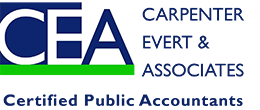Are You Ready for the New Minnesota Wage Theft Law Recordkeeping Requirements In Effect July 1, 2019?
By Corie J. Anderson on July 1, 2019 POSTED IN RECORDKEEPING
Effective today, Minnesota employers must follow the new so-called “Wage Theft Law” (it is actually just a bunch of amendments to existing law). This is primarily a change in recordkeeping and employee notices, creating an administrative burden likely to cause many in HR to want to raise the white surrender flag. While I’m not a big fan of government model documents, like the FMLA paperwork, this is another document that I do think employers will benefit from using the model notice – you can get it here. But beware – even though the State is providing this notice, it notes the notice must be completed “properly”. In other words, make sure you dot your “i’s”, cross your “t’s”, and fill in all the blanks with the correct information. The new employee notice must be provided to all new hires as of today, July 1, 2019 and a copy must be kept in the employee’s personnel file. Also, employers must be prepared to provide the information to the Minnesota Department of Labor and Industry (MNDOLI) within 72 hours of demand.
Employee Notice – Possible Pitfalls – What Can Go Wrong?
- Make sure all the blanks are completed, even write “N/A” if, for example, the employee does not have a different mailing address. This confirms you read and answered the question.
- Make sure the information is correct – if they negotiate for a different wage rate at the last minute, be sure it is in there at the right rate.
- Leave benefits available – be sure to clarify when benefits start (when the employee is eligible).
- Deductions – list everything you can think of since this says “may”. For example – consider including “usual and customary taxes and withholding and authorized deductions”.
- BE SURE IT IS SIGNED by BOTH the employer and the employee (I cannot tell you how many non-compete agreements I see that do not have the employer’s signature).
- Keep the second page with the notice to confirm they were provided the notice in multiple languages.
- As the information changes (i.e. rates of pay, deductions, vacation time, etc.) new notice must be given. And yes, it is going to be an administrative nightmare. Every time something on the form changes, the employee needs a new notice. Best practices (if possible) would be to have the employee sign the notice.
Earnings Statements – New Information Required – Check With Your Payroll Provider
Information provided on employee’s payroll (pay stubs or earnings statements) must now include the following information – your payroll provider should be aware:
- Employee’s rates of pay and basis for such rates (i.e per hour, shift, day, week, salary, piece, commission or other method).
- Allowances claimed for permitted meals and lodging.
- Employer’s telephone contact information.
- Physical address of employer’s main office or principal place of business and mailing address (if different).
- Unchanged (you should already be providing):
- Name
- Wages paid (gross and net after deductions)
- Hours Worked
- Deductions made
- Benefits accrued
- Pay period start and end date
- Employer’s legal and operating name
Other Records that Must Now Be Kept By Employers:
- Hours worked each work day and workweek – including, for all employees paid at a piece rate, the number of pieces completed at each piece rate.
- A list of personnel policies with brief descriptions of each, including the date provided (suggest a list of documents and having the employee sign it – consider attaching your handbook’s table of contents).
- A copy of the new notice that is required to be provided and signed by each employee at the start of employment and a copy of any written changes to the notice that were provided to each employee.
Remedies and Penalties for Noncompliance Are No Joke:
- If the employer’s records do not provide sufficient information for MNDOLI to determine the exact amount of back wages due – the Department may decide for you the wages due based on the evidence provided.
- Employers have a “substantive right” to the payment of commissions and wages, and to be paid on a regular payday.
- Employers cannot retaliate against an employee for exercising their substantive rights.
- The Department has enforcement authority to enter and inspect records, and interview non-management employees in private (without an employer representative).
- The Department can order an employer to pay a penalty for each day payment is not made in compliance with an order.
- Many other penalties… (see the summary here).
- Criminal sanctions for wage theft – up to 20 years imprisonment and a fine of up to $100,000 if value of wages stolen is more than $35,000. The lesser criminal sanctions is imprisonment not more than 1 year and fine of not more than $3,000 for wage theft more than $500 but less than $,1000. The rest is somewhere in between.
In all, the changes are designed to give employees clear information up front about their wages and deductions. However, in reality, it’s just creating a lot more paperwork for HR and potential penalties and fines for not having kept the proper information (think about technical I-9 violations – they add up quick!).
Tags: employee notice, Minnesota, MNDOLI, recordkeeping, Wage Theft











Share On: